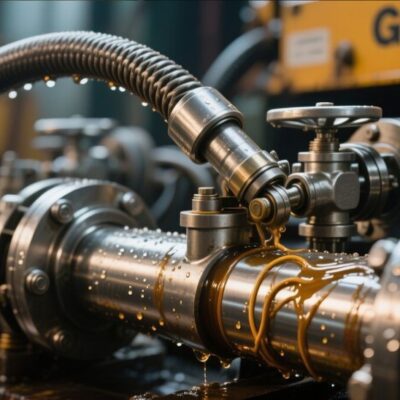As businesses strive to make their supply chains faster, leaner, and more intelligent, warehouse automation has become a strategic priority. Among the most transformative technologies leading this shift is the Automated Storage and Retrieval System (ASRS). When seamlessly integrated with SAP’s powerful warehouse management solutions, ASRS goes beyond simple automation—it enables real-time inventory control, optimized space utilization, and reduced manual intervention.
This integration not only improves operational accuracy and efficiency but also supports scalability and future growth. SAP ASRS is helping companies respond more quickly to changing demands, reduce labor costs, and streamline logistics processes. If you’re curious about what SAP ASRS is, how it functions, and why forward-thinking businesses are adopting it, this comprehensive guide will cover everything you need to know.
What Is SAP ASRS?
SAP ASRS refers to the integration of Automated Storage and Retrieval Systems with SAP warehouse management software—such as SAP Extended Warehouse Management (EWM) or SAP WM.
ASRS is a type of material handling system that uses automated machines—like stacker cranes, conveyors, and robotic shuttles—to store and retrieve goods with high speed and accuracy. When connected with SAP, the entire operation becomes digitally orchestrated, allowing for seamless data exchange between physical systems and enterprise software.
How Does SAP ASRS Work?
The integration of ASRS with SAP typically involves:
- Real-Time Communication: SAP EWM sends storage or retrieval instructions directly to ASRS equipment using interfaces like RFC, IDoc, or MFS (Material Flow System).
- Automated Movements: Based on these instructions, the ASRS machinery handles pallet movements, bin placements, or item picking automatically—no human intervention needed.
- Inventory Updates: Every movement is tracked and updated in SAP in real time, ensuring 100% visibility of stock levels, storage locations, and transaction history.
- Error Handling and Alerts: If an error occurs (e.g., item not found, location blocked), SAP immediately logs the issue and can trigger automated workflows or alert warehouse staff.
Why Integrate ASRS with SAP?
Combining ASRS technology with SAP provides several business-critical benefits:
- Efficiency: Tasks that once took hours—like finding and retrieving goods—are completed in minutes.
- Accuracy: Automated systems reduce picking and storage errors significantly.
- Real-Time Visibility: SAP keeps your inventory records up-to-date with every automated action.
- Labor Savings: Fewer manual touchpoints mean lower labor costs and reduced risk of human error.
- Scalability: Whether you’re managing a small warehouse or a multi-zone distribution center, SAP ASRS can scale with your business.
- Data-Driven Optimization: SAP analytics and reporting can identify slow movers, fast movers, and bottlenecks—allowing continuous improvement.
Where Is SAP ASRS Commonly Used?
SAP ASRS is widely adopted in industries with high-volume warehousing and distribution needs, such as:
- Automotive
- Retail and e-commerce
- Consumer goods (CPG)
- Pharmaceuticals and healthcare
- Manufacturing
Anywhere precision, speed, and inventory accuracy are critical, SAP ASRS can provide a major competitive advantage.
Key Components of SAP ASRS Integration
- SAP EWM (Extended Warehouse Management)
The core SAP module used to manage warehouse operations, including ASRS integration. SAP EWM offers direct support for Material Flow Systems (MFS), allowing real-time equipment control. - Material Flow System (MFS)
A subcomponent within SAP EWM that enables direct communication between SAP and the programmable logic controllers (PLCs) that operate ASRS equipment. - Warehouse Control Unit (WCU)
A middleware system that sometimes acts as an interface between SAP and the ASRS hardware, translating SAP instructions into machine-readable commands. - IDoc or RFC Interfaces
These standard SAP technologies facilitate message exchange between the SAP system and external systems like WMS, ASRS, or MES.
Challenges and Considerations
While the benefits are strong, integrating ASRS with SAP requires careful planning:
- Complex Configuration: Mapping physical locations and logic in SAP EWM must match the actual ASRS layout and behavior.
- Vendor Coordination: Your ASRS provider, SAP team, and system integrator must collaborate closely for smooth implementation.
- Testing and Simulation: End-to-end testing is crucial to avoid disruptions in real-time operations.
- Cost: ASRS is a high-capital investment, but long-term ROI from reduced labor, higher throughput, and better accuracy often outweighs the initial cost.
Is SAP ASRS Right for Your Business?
If your business handles high inventory volumes, requires 24/7 operations, or faces labor shortages in warehousing, then SAP ASRS could be a smart investment. Companies with seasonal demand spikes, temperature-sensitive goods, or just-in-time inventory models can benefit the most from this level of automation.
Final Thoughts
SAP ASRS is not just a technology upgrade—it’s a strategic leap toward the future of intelligent warehousing. By tightly integrating automated storage and retrieval systems with SAP’s advanced warehouse management solutions, businesses can unlock unprecedented levels of operational efficiency, inventory accuracy, and real-time visibility.
This powerful combination reduces manual labor, minimizes errors, and accelerates order fulfillment, helping companies meet rising customer expectations. As supply chains become more complex and demand more agility, embracing SAP ASRS positions your organization at the forefront of innovation. If you’re planning to modernize your warehouse, this intelligent automation should lead your transformation roadmap.

